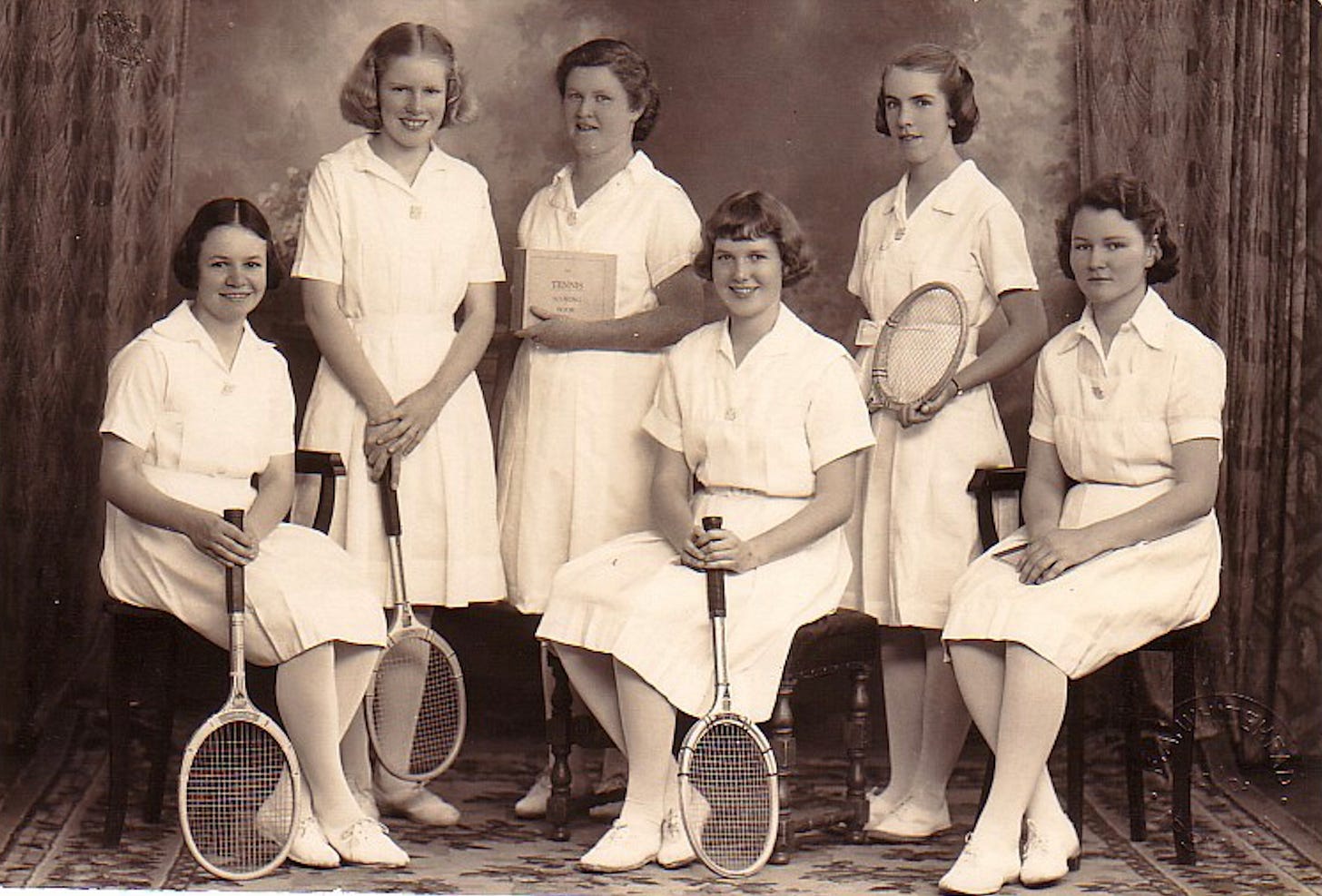Tennis is a good game for a small town. Its basic requirements are easily had and with a little imagination you can even practice alone. I spent many happy afternoons losing sets against a wall at the Sportsground between rests under Jack Ronan’s mango tree and daydreaming about the slice and the drive.
I wasn’t anywhere near the first, either. As far as I can tell tennis appeared at Mt Crosby soon after the First World War and was well-established by the 20s and 30s.
The search for a flat piece of land for a tennis court must’ve been something amusing – the result being a terrace on today’s Hester Court, lit with a series of incandescent bulbs each the size of a lady’s head that looked down from lightshades reminiscent of the era’s cloche hats (size XXL).
The advent of radio in the twenties popularised sport and permitted heroes that had nothing to do with war – a relief that was reflected in the generational change from chief engineer Joe Stewart (a devout pro-conscriptionist) to his successor, Jack Dan (a socially progressive engineer). Better still, tennis was for men and women.

At Mt Crosby every Friday night there was a good turn-up of characters with unimproved tennis styles they'd developed for themselves. Memorable to me was Dave “Diesel” Hutchins who caught polio as a child and, with some help from Sister (Elizabeth) Kenny of Clifton, taught himself a left-handed style that redefined the meaning of slice.
Good humour and conversation were wrapped around the most imperfect tennis to make each evening an enjoyable extension of the last. It was at tennis I first heard older men talk about our famous steam engines, that there was once a train to town, and other revelations that proved times had changed. At tennis, I met unrelated ladies called Auntie, got knocked out throwing stones between games, and Mrs McDougall yelled me out of a tree (fair enough).
Notwithstanding all of that, like local moths we were all attracted to the friendly glow of the court. Painted gum trees picked out by the bulbs provided the backdrop.

To finish my essay, I have a cautionary tale that says something about how long tennis has been enjoyed in these parts. In the dimly-lit store room beneath the old school, behind bin on bin of medicine balls, some old tennis racquets stood in a drum with a cricket bat I know was donated to the school by Joe Stewart in the 1890s. At least one of them looked more like a snow shoe than a tennis racquet and made me curious enough that, one lunchtime, I took it out to try.
It was really disappointing – it was crazy heavy and its grip was gone (if it ever had one). It looked like an inferior design to me, so I tested it with a small stone, which is something I wouldn’t have done with a new racquet. It didn’t even hit a good rock, so I took it back to the drum and I think I might have been the last kid ever to play with that racquet until it got dumped with all the pointless medicine balls.
At best guess it was as old as the cricket bat.



